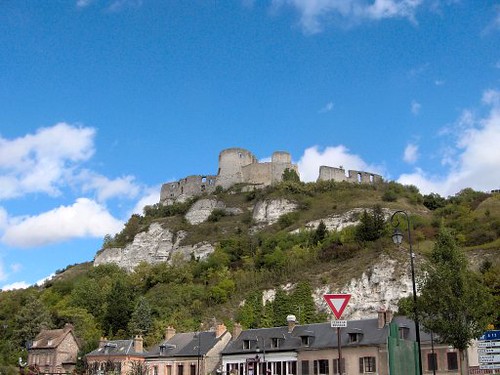
The French use the word “chateau” for “castle,” but they also use it to mean “large house” or “small house.” So it’s all contextual, and makes no sense. We couldn’t visit the castle, because they all closed at the end of September – one of the problems of traveling during shoulder season.
We passed homes that were half-timber construction (typical of the region), and some that had thatched roofs. It was like being transported back in time.
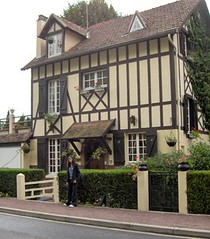 | 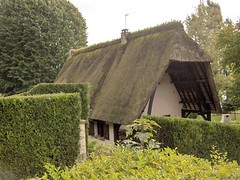 |
Eventually we reached the town of Giverny, where the home and gardens of Claude Monet have been lovingly preserved. You must pay a small admission fee to enter the gardens, and it’s a little more if you want to see the house as well. The gardens are magnificent, even in October. I can’t name all the flowers that are planted there, but they are growing 8 feet tall in some places, in profuse, voluptuous splashes of color.
 |  |
 | |
There’s an underground passageway that takes you beneath the busy road that runs past the town and brings you up at the lily pond where Monet painted his famous series. It’s a beautiful spot, and my daughter was quite captivated seeing the lily pond and the paintings that were completed there.
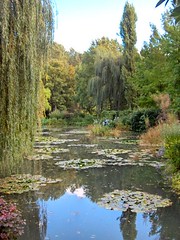 | 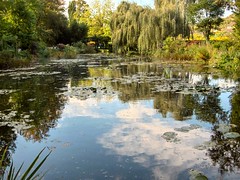 |
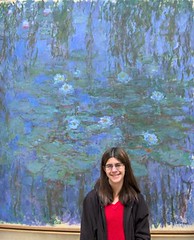 | 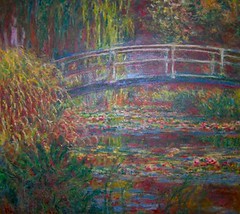 |
Monet was an avid collector of Japanese prints, which cover the walls of his house. At one point, he had a small footbridge built over one end of the lily pond, in the arched Japanese style, which is known as the Pont Japonais. This bridge became the subject of a series of famous paintings. I found it amusingly ironic that on that day, the Pont Japonais was groaning beneath the weight of a dozen or so Japanese tourists, frantically snapping pictures.
Monet’s house is surprisingly modest, although that may have been the way things were back around the turn of the 20th century. Besides the dozens of Japanese prints from his collection, there were lots of copies of his paintings done by students. This is to give you a feel for the way the house must have looked when he lived there, but the copies sucked, so it didn't really work. It’s filled with period furniture that matches the furniture from the original house. My daughter was amused by the lumpy featherbeds.
The French have learned much from Americans, so the entire area that Monet used as a studio has been turned into a gift shop, selling postcards, shopping bags, refrigerator magnets, books, and even Impressionism-by-numbers art kits.
When we left the house, we visited a museum nearby called the American Art Museum, where there was a terrific exhibit of Winslow Homer paintings. After the museum, we took a short walk through the lovely little town of Giverny to the church where Monet is buried, along with many members of his family. By this time, My daughter had reached art and history overload, and wanted nothing more than to sit down and read a book.
 | 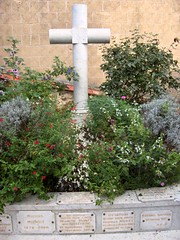 |
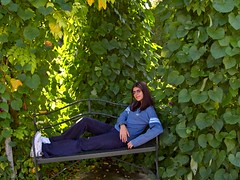

No comments:
Post a Comment